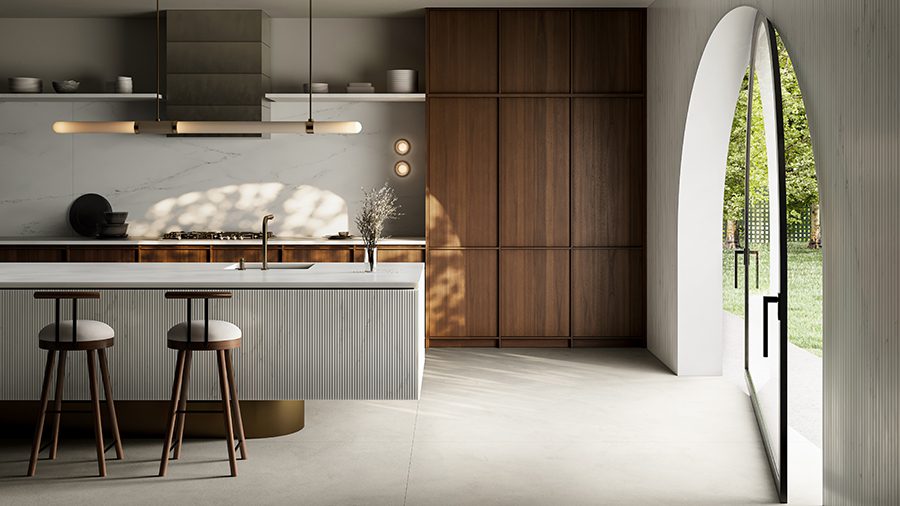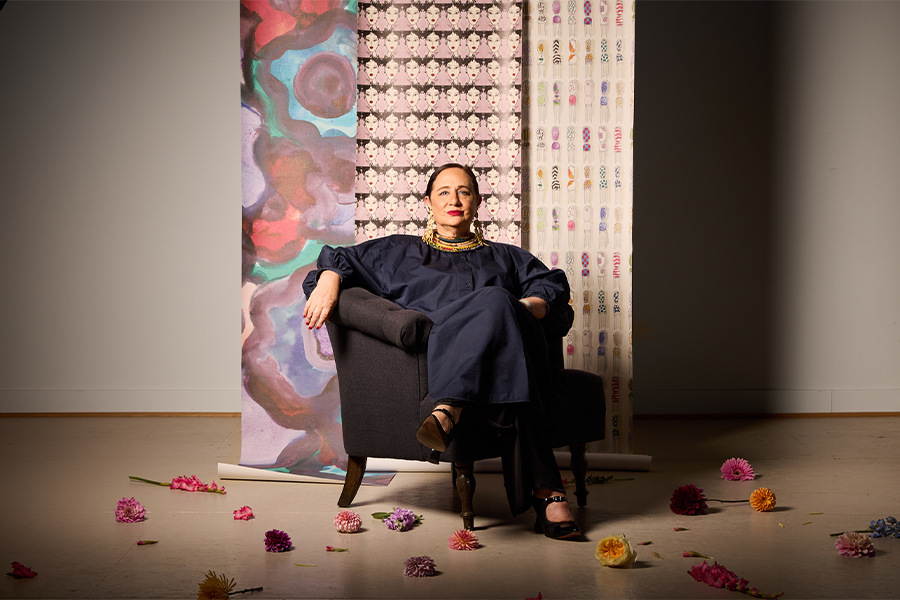Born in London, Claudia Afshar was a classically trained dancer from the age of 7, training 30 to 40 hours a week at the Tring Park School for the Performing Arts outside the city. At the age of 16, she transferred to the London Studio Centre further honing her skills in dance and performance. “It was very disciplined and extremely creative,” she says. “I grew up in this environment of real talent.”
At the same time, she was exposed to the design world by her mother, Anita Kohn, who ran her own interiors studio, Living in Space, in London, and her real estate developer father, Edwin Kohn. When she wasn’t dancing, “I was dragged between both of their businesses,” she says.
Though her mom told Afshar she had an eye for design, Afshar was committed to her dance career, moving to Los Angeles to pursue her passion. But soon, that spark began to dim. As she figured out her next move, she started to do small design projects around the LA area. Her first one, a flip of a 4,000-square-foot home, sold in two days. “I thought, ‘I’ve got something here,’” she says.

Shown in Nacre, the Dekton Ukiyo collection for Cosentino flaunts a fluted design
She founded her eponymous firm in 2014, and today, her seven-person team is known for creating understated and timeless interiors, layering textures with a soft hand across residential and commercial projects. “I don’t think I’d be the designer I am today without the dance background I had,” she says, crediting the rigors of the profession for providing her with the foundation to pivot to another demanding career.
Afshar imbued her pieces for Dekton Ukiyo, her first product collaboration with Cosentino, with her firm’s signature refined touch—one that is both romantic and contemporary. Available in five colorways, the collection explores texture and geometric shapes through fluted tiles informed by Japanese design principles.
“We didn’t want it to be the star of the show,” she explains. “We wanted it to be a staple product that, when used with other products with more personality, would bring the whole space to life.” Take the subdued Nacre, a cream shade characterized by details like fine micro-concrete and lime plastering. The terracotta-hued Umber, meanwhile, creates a warm surface thanks to its welcoming pigment.
Much like the seemingly effortless movements of a dancer, the collection’s carefully crafted details add fluidity to indoor and outdoor spaces. “With dancing, I felt like I was at my peak when I was on stage—it would just flow out of me,” Afshar adds. “That’s how I feel with design. I’ve always been hopeful that whatever I put my passion into, it was something that came from the heart and fulfilled me, and I have that with my craft today.”

Rem, another shade from the Dekton Ukiyo range, features brown and gray veining with hints of gold
This article originally appeared in HD’s February/March 2024 issue.


